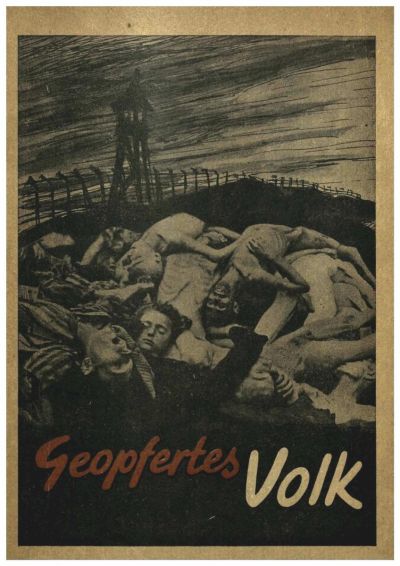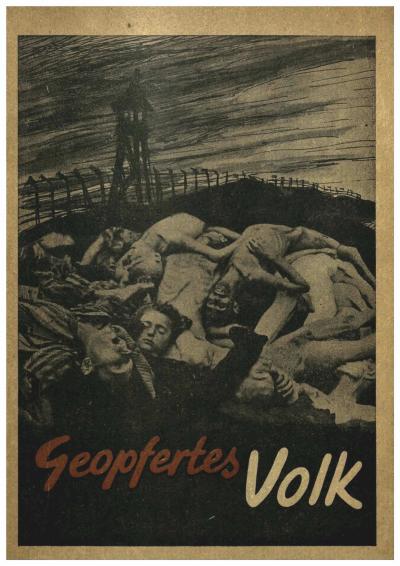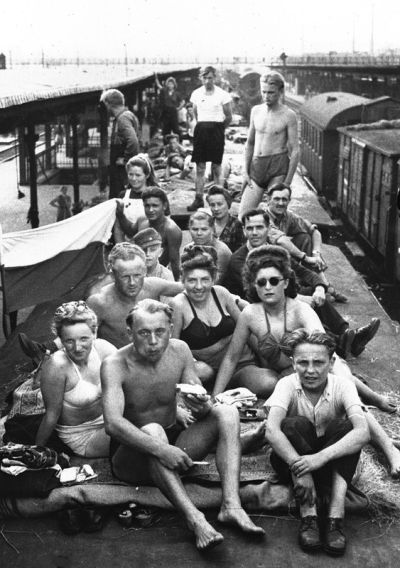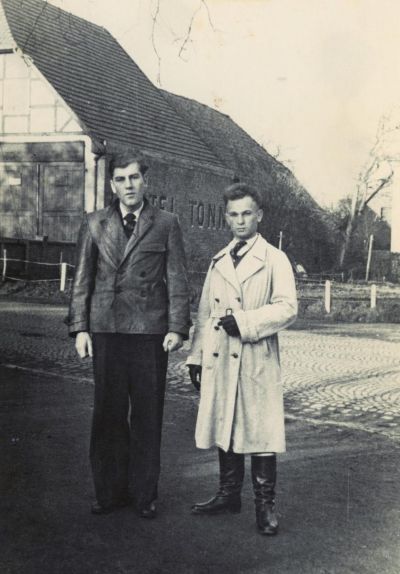“Sacrificed People” by Mieczysław Chersztein

The harrowing book “Sacrificed People” by Mieczysław Chersztein was probably written in Polish in April 1945 in the displaced persons camp at Mosbach. It was published only a few weeks later in Polish; a German edition appeared in Spring 1945.
In the foreword to the German translation Moses Moskowitz, an officer with the American forces and head of the department of historical and political information for Baden-Württemberg wrote the following on 31st October 1945: „Whilst I was reading it I understood for the first time the full significance of what I had seen in the concentration camps that we liberated [...] during our march through South Germany”.
The 122 page book, based on eyewitness reports, is a powerful indictment of the genocide of the Jews by the National Socialists. It was allowed as evidence in the Nuremberg war crimes trial.
Little is known about the author, Mieczysław Chersztein. From his own accounts which are contained in the book it is clear that he questioned several former concentration camp inmates in the displaced persons camp in Mosbach and used their statements as the basis for his report. Since he himself maintained that he was not recognisable as a Jew at first sight, he was provided with reliable information not only by the Jewish but also by the non-Jewish inmates.
After he fled from the Jewish ghetto in Vilnius in 1941, Mieczysław Chersztein first tried to find a safe shelter in a number of Polish villages. Whilst he was in the ghetto he had changed his original first name “Moses” to “Mieczysław” and his family name to “Cherszteinski” and had them entered into a forged passport. After he surviving several raids by the Germans who were looking for potential forced labourers for the German Reich, his luck deserted him in 1942. He was arrested and sent via Minsk to a collection point in Ulm run by the South-West German Office of Labour. From there he was moved to Mannheim, where he worked for two years as a forced labourer for the Lanz company and then for the Isolation AG in the Mannheim district of Neckarau. After the Forced Labour camp was evacuated he was liberated on the return march by American troops in Dallau (today Elztal).
Chersztein’s book takes the form of objective reports bearing witness to the way the Germans treated the Jews in the ghettos in Kraków, Łódź, Warsaw, Sandomież, Stanisławów and Lwów. Other chapters portray the fate of the Jews in German-occupied Soviet Russia, describe what happened in the concentration camps in Bełżec, Treblinka and Majdanek, and provide reports of the situation in the concentration camps for Jews from Poland in Stutthof, Unterrixingen, Auschwitz, Vaihingen/Enz, Natzweiler, Budzyń, Sachsenhausen, Groß-Rosen, Wasseralfingen, Mauthausen, Wiesenhof, Hambühren, Bergen-Belsen, Dachau, Buchenwald, Neckarelz, and the Pawiak prison in Warsaw.
Jacek Barski, November 2016



